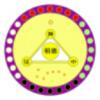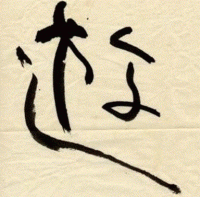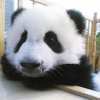Search the Community
Showing results for tags 'Confucius'.
Found 5 results
-

Confucius was a Sage: Testimony of a Hostile Witness
Zhongyongdaoist posted a topic in Confucian Philosophy
That Confucius was a Sage is part of the Confucian tradition. I have summoned and deposed a hostile witness and obtained the following account: Hostile Witness name: Zhuangzi Deposition summary: Would you please state your name for the record? Zhuangzi. And I understand that you have written a great deal on the subject of Chinese Philosophy, and in particular, what has come to be know as "Taoism", is that correct? Well, that was a long time ago and it was mostly about "Dao", I don't know much about these Taoists, though apparently they do like to refer to me as an authority. Is it or is it not true that in writings published under your name you have given a very positive account of Confucius? Yes Bearing in mind that negative accounts of Confucius also appear in your published writings, do you have an explanation for this seeming contradiction? Well, I may have been dreaming I was a Confucian when wrote it, you know, sometimes a man sometimes a butterfly, sometimes a Confucian. Can you repeat the account that you have given about the Sage qualities of Confucius? Yes. For the sake of the Jury, consisting largely of "Taoist", who who never read anything outside of your works and those of Laozi, can you clarify the names of these two interlocutors? Yes, they are Confucius under his courtesy name Zhongni and his favorite disciple Yan hui. Let the jury note substantiating evidence A and B. A: Zhongni was Confucius courtesy name, under names, on Wikipedia B: Yan hui was Confucius favorite disciple on Wikipedia Alright then, can you tell the court and the ladies and gentlemen of the jury what you have written about Zhongni, AKA Confucius, and Yan Hui. Yes, this is what I wrote: If it may please the Court your Honor, I submit to the Court and the Ladies and Gentlemen of the Jury, As the testimony and supporting evidence shows Zhuangzi has written very positive things about Confucius as well as the better known criticism of Confucius person and teachings and I submit that a person who sometimes dreams himself a butterfly and sometimes a Confucian is hardly a reliable source for quotes to criticize either the person of Confucius or his teachings or the Confucian tradition. The jury is still out on this one. Edit: Corrected in Zhuangzi in final paragraph and added emphasis in the second section of the quoted material, to make it easier to find the important passages. -
I’ve recently be re-reading A.C. Graham’s wonderful translation of the Chuang-tzu. Unlike any other English translation I have come across he orders the text thematically, only preserving the original order of the inner chapters and those chapters which were clearly written as complete works. While some purists might object, the text is one that has clearly be re-ordered many times in its history (often to the point of incomprehensibility), so I, for one, find Graham’s work both proper and very helpful. In his translation he groups together seven extracts dealing with the meeting of Confucius and Old Tan (identified as Lao-tzu). These are expansions on a Taoist tradition that Confucius took instruction from the author of the Lao-tzu and even converted to Taoism himself. The story seems based on an earlier Confucian story found in “The Questions of Tseng-tzu” in the Book of Rites where Confucius consults Old Tan on points of ritual. While Old Tan is mentioned in the inner chapters of Chuang-tzu he is not identified as the author of the Lao-tzu (a book the author of the inner chapters was probably unaware of and never references) and is a relatively minor character. The cycle of stories detailing the meeting of Confucius and Old Tan are found in Chapters 12, 13, 14 and 21 of the Chaung-tzu. There is good evidence that they should be dated as a very late addition to the Chuang-tzu – probably Han dynasty (later than 200BC) as they reference the ‘six classics’ which were not canonised till the Han and to the ‘twelve classics’ which are the six plus Han era apocrypha. So it is a reasonable assumption that the author(s) of these passages are Han dynasty Taoists whose aim is to establish intellectual priority for Taoism. However what is important is that these are the earliest detailed accounts of their meeting; earlier accounts do little more than mention Confucius took instruction from Old Tan. What struck me reading them again was this. In the passages Old Tan seems far closer to the philosophy found in the inner chapters of the Chuang-tzu than that found in the Lao-tzu. So much so that rather than seeing these stories as fictional conversations between the author of the Lao-tzu and Confucius it is far more profitable to see them as fictional conversations between the author of the inner chapters of the Chuang-tzu and Confucius. 1) The Lao-tzu is never quoted or referenced. The closest it comes is one passage from Ch 14 where an analysis of wu-wei is given – though it is analysed in terms of Chuang-tzu’s vocabulary of Hsiao you yu (“rambling without a destination” – the title of the first of the inner chapters). 2) In the stories Old Tan constantly refers to specific examples from nature: “the birds and the beasts flocking together”, “the snow-goose wants no daily bath to stay white, the rook no daily inking”, “In fruits and berries there is a pattern”. Etc… This use of detailed observations of natural processes is a recurrent theme in the inner chapters of the Chuang-tzu but barely features as a motif in the Lao-tzu. 3) There is a strong focus on “rambling” (yu) – a word that occurs more frequently that tao in the inner chapters; but is rarely mentioned (if at all) in the Lao-tzu. 4) Some images are taken directly from the inner chapters: “fish … forgetting each other in the … Lakes” is taken from Ch 7; “motionless as withered wood” which is taken from the opening of Ch 2. Manipulation of the heart (hsin) and association with stillness which is taken from Ch2 as well.; reference to the sophist Kung-Sun Lung (the “hard and white”) also from Ch 2. 5) Discussion comparing the rigidness of Confucianism to the spontaneity of Taoism; which, while present in the Lao-tzu, fits far better with language and themes of inner chapter 3. A detailed example may help. In one of the stories of their meeting (ch 14) Confucius bemoans that he cannot get a prince to follow his expositions on the rule of the Chou and Shou. Old Tan responds: What you speak of now is still the footprints, and the footprints are where the shoes passed, they are no shoes. The white fish-hawk impregnates when the couple stare at each other with unwavering pupils, insects when the male calls from the wind above … The natures of things cannot be exchanged … the Way cannot be blocked up. If it coincides with the Way no course is unallowable None of this really matches the themes found in the Lao-tzu, however it is pregnant with images and themes from the inner chapters, from the use of examples from nature, to the dismissal of using historical examples to help discern the way (see, for example, the speech of the Madman of Ch’u – inner ch 4), to the use of the sophist term ‘unallowable’ (see, for example, Ch2 where mohist and sophist ‘disputation’ of the ‘allowable’ and ‘unallowable’ is severely critiqued). The story concludes with Confucius returning to Old Tan and stating: I have grasped it! Crows and magpies hatch, the fish blow out foam, the tiny waisted metamorphose… Too long I have failed to be a man fellow to things in their transformations, and if one fails to be that how can one transform men? Again we have the converted Confucius talking in images and terms which are reminiscent of (and in one case – fish blowing foam – taken directly from) the inner chapters of the Chuang-tzu. Why should any of this matter? I think we can draw a number of conclusions: i) As late as the Han dynasty there was a tradition of Old Tan as the Taoist who talked down to Confucius (and converted him to Taoism) which was separate from the tradition of Old Tan as the author of the Lao-tzu. The author(s) of these passages does not reference the Lao-tzu at all. ii) That for some Han dynasty Taoists the philosophy of the inner chapters of the Chaung-tzu with its focus on natural models and the concept of ‘wandering’ was seen as the apex of Taoist thinking rather than the Lao-tzu. iii) It adds weight to the hypothesis that the Lao-tzu’s author(s) was unknown and the text was only attributed to Old Tan (Lao-tzu) in the Han Dynasty. iv) That Old Tan starts out as a Confucian character (from the Book of Rites) he is then morphed into a subversive Taoist character by Chuang-tzu in the inner chapters (a trick he plays a lot, see also Chieh Yu the Madman of Ch’u and Ch’u Po-yu the wise man of Wey – both originally Confucian characters). Only several hundred years later, in the Han dynasty when Taoists and Confucians were battling for intellectual supremacy was Old Tan finally turned into the mythical author of Lao-tzu – a canny move as Old Tan had already been established as the Taoist hero whom Confucius had taken instruction from.
- 45 replies
-
- 4
-

-
- Chuang-tzu
- Lao-tzu
-
(and 1 more)
Tagged with:
-
1. Alias of Bu Shang, one of the Master's prominent disciples. 2. A variant reading says; "He who, in choosing a wife, values her virtue more than her beauty." 1. Ignorant about the rituals. A variant reading of this sentence is "...and what he learns will not be solid." 2. I.e. inferior to him in virtue. 1. This was said about a ruler.
-
1. In ancient times, because battles were conducted on chariots, the military power of a state was measured by the number of chariots it possessed. A thousand-chariot state during Master Kong's time was a fairly small one. Note that each chariot was drawn by a team of four horses. 2. i.e during slack seasons in farming. 1. "Abroad" here implies 'at school'. 2. The Six Arts, namely, the rituals, music, archery, charioteering, language and arithmetic.
-
Welcome to the Confucius forum. This forum was created for discussing the works attributed to Confucius as well as the influence of Confucian thought on Chinese culture (both ancient and modern), how it interacts with other Chinese traditions such as Taoism, Feng Shui, Chinese shamanism, etc. Please feel free to post.


